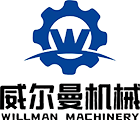As more and more consumers choose “sugar-free drinks” on the shelves of convenience stores, a new blue ocean in the beverage industry segment has been quietly born. In the process of food and beverage companies opening up new markets with sugar-free beverages as their foothold, sugar substitutes have become a well-known raw material and an important part of scientific sugar reduction and sugar control. But for manufacturers, who can have the last laugh in this emerging track not only depends on whether “sugar-free” is in place, but also who can lower the price of beverages. Building a complete back-end production line will obviously Become a must for food and beverage companies.
picture
Under the rapid development of society and economy, paying attention to “big health” has become a new proposition in the development of the times. In the “Healthy China Action (2019-2030)”, 15 major actions such as reasonable diet action, health knowledge popularization action, and diabetes prevention and control action are clearly put forward, and 124 major indicators are pointed out, including daily sugar intake. The amount of food should be ≤25g, the intake of edible salt should be ≤5g, and the intake of edible oil should be between 25g and 30g. There is no doubt that reducing sugar, salt, and oil has become a healthy lifestyle that our country vigorously advocates.
Oil reduction and salt reduction can be controlled from people’s daily life, but the consumer groups who have long relied on various bottled drinks are largely unable to control their own hands, and the heavy responsibility of sugar control is given to food and beverage producers. It also points out a new direction for the development of the industry. In recent years, emerging brands represented by Yuanqi Forest and Suntory have grown rapidly, and sugar-free juice bubble drinks and oolong tea drinks have been launched one after another. Sugar dairy products, carbonated drinks, energy drinks.
It should be noted that the “sugar-free” mentioned here actually refers to replacing traditional white sugar with sugar substitutes (also known as sweeteners) with high sweetness and low calorie such as erythritol and sucralose. To process beverages to achieve a relatively low-sugar goal, rather than true sugar-free, consumers should be aware of the difference in actual purchases.
With the breakthrough of sugar-free beverages in the food and beverage market, the market size has doubled year after year, which can be said to be a tripartite profit for food and beverage companies, sugar substitute suppliers, and consumers. However, industry insiders also pointed out that sugar reduction is relatively easy to achieve in beverage processing. The key is that after more and more new and old brands enter this track, the market competition will become more intense. More market share mainly depends on who can control the product price in a suitable range.
The control of commodity prices is closely related to production costs, and production raw materials, labor costs, etc. are all key influencing factors. Since the raw materials for production are closely related to changes in the market, we will leave it aside for the time being. On the other hand, the cost of human and material resources is obviously an important part of the controllable cost of an enterprise, and the automated beverage production line has received extensive attention.
Generally speaking, beverage production lines often cover extraction, filtration, separation, blending, sterilization, blowing, filling, cooling, labeling and many other processes. Thanks to the integrated and more automated production lines of carbonated beverages, fruit and vegetable beverages, and tea beverages, the entire production line of beverage pre-processing equipment, sterilization equipment, filling machinery, packaging equipment, etc. The production capacity reaches a high efficiency of about 1,000 bottles, and the number of manpower required for the production line is greatly reduced, which effectively reduces the impact of rising labor costs, and also enables food and beverage companies to achieve a higher degree of cost control. level.
Looking at the current food and beverage enterprises, traditional brands with the advantages of production plants are accelerating the intelligent and digital innovation of production lines, and promoting the development of enterprises to a new level. Many cutting-edge brands are also accelerating the pace of building their own factories, introducing aseptic carbonic acid production lines, etc., so that the autonomy and control of production are in their own hands. Who can stand in the sugar-free beverage market in the future, we will wait and see.
Post time: Mar-29-2022



